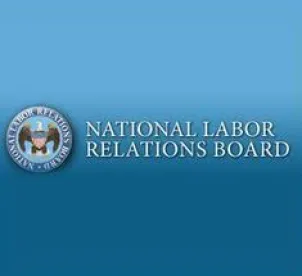The National Labor Relations Board (“NLRB”) recently overturned a 2004 decision that established a standard determining whether workplace rules, including those contained within employee handbooks, infringed upon workers’ rights under the National Labor Relations Act (“NLRA”).
In 2004, the NLRB articulated a standard providing that workplace rules cannot unlawfully interfere with workers’ rights under Section 7 of the NLRA generally governing “concerted activity.” The standard is known as the “reasonably construe” standard because it stands for the proposition that, if workers could reasonably construe a workplace rule to chill their ability to exercise their Section 7 rights, then the rule is unlawful.
Section 7 provides workers the ability to organize and elect to be represented by a union, to collectively bargain, and to engage in other concerted activities for the purpose of mutual aid or protection. While the NLRA is often misconstrued to apply exclusively to unionized workers, it is equally applicable to non-unionized workers.
The “reasonably construe” standard was the source of contention for numerous policies contained within employee handbooks. Notably, many social media policies restricting employees from engaging in disparaging commentary about their work conditions, supervisors, or other factors pertaining to terms and conditions of employment were struck down as unlawful. The same has been held for no-camera policies and policies mandating that employees treat each other with dignity and respect. The rationale behind the unlawfulness of the rules is that they prohibited employees from airing their grievances such that they were restricted from collectively working to their mutual aid and protection in the workplace.
Given the scrutiny of these policies, most employee handbooks contain language expressly disclaiming any infringement upon Section 7 rights in an effort to ensure the workplaces rules could not be “reasonably construed” as infringing upon those rights. Some employee handbooks watered down their workplace rules to avoid scrutiny for chilling Section 7 rights.
The new standard announced by the NLRB attempts to provide clarity for evaluating workplace rules and their impact on workers’ rights. The new standard will function under two components: 1) “the nature and extent of the potential impact on NLRA rights” and 2) the “legitimate justifications associated with the rule.”
Workplace rules will now be delineated into three categories when they are examined by the NLRB. The first category contains rules that the NLRB considers to be lawful because when “reasonably interpreted” they do not inhibit NLRA rights. These rules include, for example, no-camera requirements and rules requiring that employees conduct themselves in a civil manner in the workplace. The NLRB asserts that such rules do not interfere with NLRA rights, and even if they do, employers’ justifications for the rules outweigh such infringement.
The second category includes rules that will be scrutinized on a case-by-case basis. Under this category, the NLRB will conduct a balancing test to determine whether the infringement upon NLRA rights is outweighed by an employer’s justifications for the rule. This category will likely be a function of fact-specific scenarios including the employer’s operations and the rule’s nexus to operations.
The third category covers rules the NLRB considers to be unlawful. These rules prohibit or limit NLRA-protected activity, and there is no need to balance employee and employer rights. An example of an unlawful rule under this category includes “a rule that prohibits employees from discussing wages or benefits with one another.”
While employers must remain diligent in ensuring their workplace rules do not infringe upon NLRA rights of their workers – unionized or non-unionized – the NLRB’s new standard provides what appears to be a more balanced approach for evaluating workplace rules. Under the “reasonably construed” standard, only employees’ perspectives were considered. Now, the NLRB is expected to consider not only the employees’ perspectives but also the practical considerations of employers and the rationale for implementing the challenged rules.




 />i
/>i

